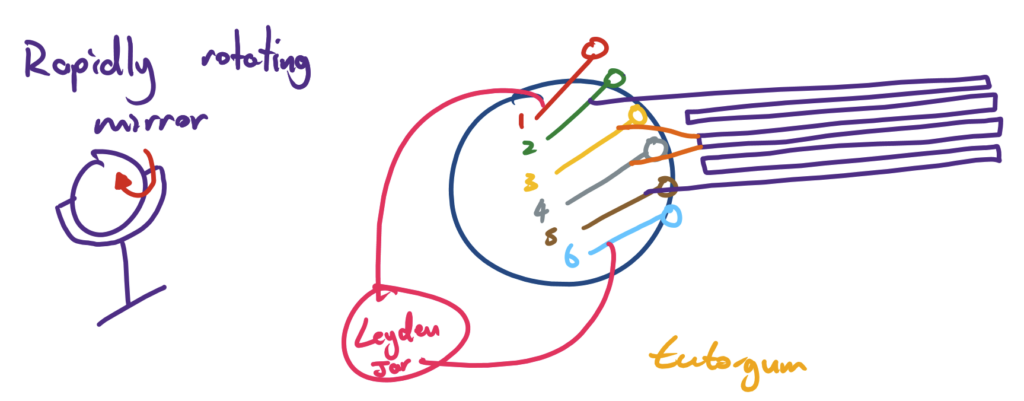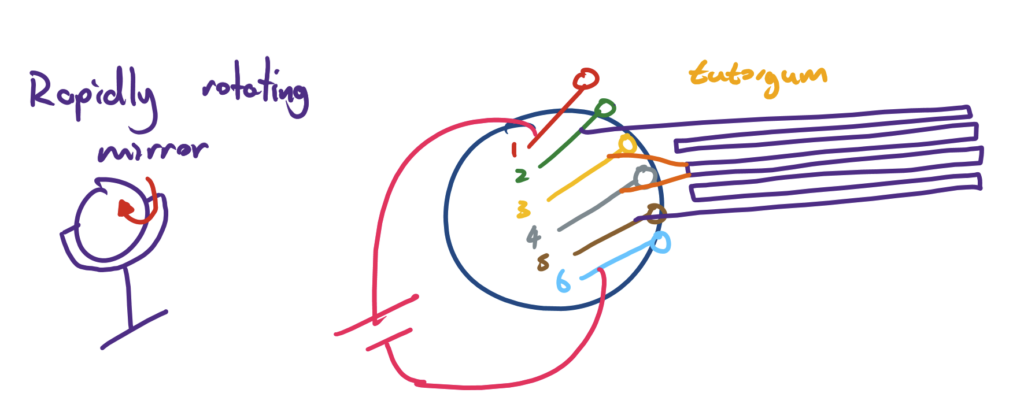This is the first comprehensive, accessible and complete description of Wheatstone’s experiment I have been able to find. His work ins 1836 laid the foundation of the Foucault experiment.
The existing descriptions of his work online are vague and left me doubting if they actually knew what they were talking about or if they just said this cause everyone else said this.
To that end, I decided to read his original paper, and I have distilled it into something much more accessible. Original paper here.
The following is his setup.

To understand it better, it would be easier to consider a simplified version using a DC power supply instead of a Leyden Jar.

6 pins with metal balls are attached on a wooden board, each is labelled from 1-6. Lead 1 is connected to the positive terminal of a high voltage battery. Lead 6 is connected to the negative terminal of a battery. Lead 2 is connected to the start of a really long wire. The wire Wheatstone used was about 800m long. The end of this long wire was connected to Lead 5.
The middle bits of the wire were connected to Lead 3 and Lead 4.
He had a rapidly rotating mirror which rotates in the vertical plane.
When he connects the battery, the whole setup will spark.
With the DC setup, the high voltage would cause sparking. Let us assume electricity
flows from positive to negative. Specifically, we would see a spark between 1 and 2. Then the electricity from 2 would have to go through 400m of the long wire to get to 3. It would then spark to get to 4. From 4 it would carry on in the 400m wire to get to 5. From 5 it sparks with 6.
When you view these 3 sparks in the rapidly rotating mirror, you will see this:

This is because the right most spark in the mirror came from the Lead 1 to Lead 2 spark gap. It came first so we expect it to be the first/most bottom.
The streaking display is due to the rapid movement. Think about the Flash as he zips about, leaves a streak.
As we now consider a Leyden jar, the actual observation is

This is because actually 1-2 and 5-6 spark at the same time. This is because a Leyden jar’s positive outside is connected with 1, which will have a large voltage to 2 (which is neutral), hence an almost instant spark.
Similarily, 6 is connected to the negative inside of the Leyden jar, hence there will be a large voltage to 5 (which is neutral), hence an almost instant spark.
